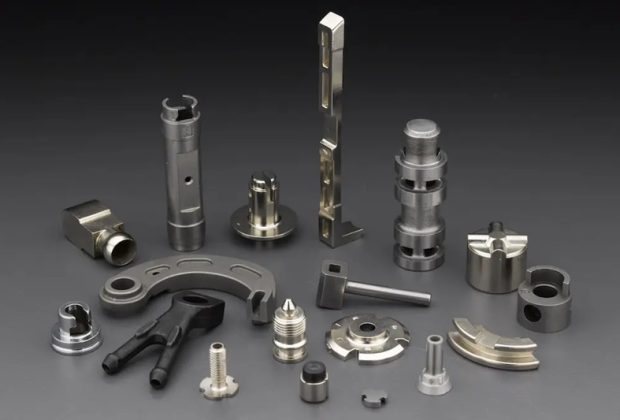MIM manufacturing stands in those quiet industrial spaces where metal powder becomes surgical instruments, where automotive sensors take shape from dust, where the smallest components carry the weight of entire systems. This is metal injection moulding, and it’s remaking how we think about making things from metal.
The process tells a story of precision meeting volume. Fine metal powders get mixed with polymer binders until they become something you can mould like plastic. That feedstock goes into injection moulding machines where it fills cavities shaped like the parts engineers designed. What emerges looks fragile, these green parts they call them, but they’re just beginning their journey.
The Transformation Process
Understanding mim manufacturing means watching metal transform through stages that would seem like alchemy if you didn’t know the science behind it. The green part goes into debinding where the binders get removed through heat or chemical baths. What’s left is a brown part, porous and delicate, maybe sixty per cent the density of solid metal.
Then comes sintering. Furnaces heat these brown parts to temperatures hot enough that the metal particles fuse together, hot enough that the parts shrink to their final size, hot enough that what was powder becomes solid metal with properties matching or exceeding traditionally manufactured components.
Singapore’s MIM industry demonstrates what happens when precision engineering meets high-volume manufacturing. Facilities there operate with ISO 9001 and ISO 13485 certifications, quality standards that matter when you’re making parts for medical devices or automotive safety systems. The work requires cleanrooms, temperature-controlled environments, and operators who understand that a fraction of a degree can mean the difference between a component that works and one that fails.
Real Advantages in Production
MIM manufacturing delivers specific benefits that engineers can measure and accountants can calculate:
• Complex geometries without machining
Parts that would require multiple operations on conventional equipment come out of the mould nearly finished. Internal channels, undercuts, threads, features that would be expensive or impossible to machine, they’re all possible with MIM.
• Material efficiency
Traditional machining might waste seventy per cent of your raw material as chips and swarf. MIM manufacturing uses nearly all the material you start with. What doesn’t end up in parts can often be recycled back into feedstock.
• Consistent repeatability
Once you’ve got the process dialled in, once the mould is right and the parameters are set, you can make ten thousand parts that are virtually identical. That matters in medical devices, where lives depend on consistency.
• Material versatility
Stainless steels, tool steels, soft magnetic alloys, even titanium and tungsten heavy alloys. The range of materials available through mim manufacturing keeps expanding as powder metallurgy advances.
• Cost effectiveness at volume
The tooling costs money upfront, but when you’re making thousands or millions of parts, the per-unit cost drops to levels that traditional manufacturing can’t match.
Applications Across Industries
In medical facilities, surgical instruments made through MIM manufacturing perform life-saving procedures. The stainless steel components resist corrosion, can be sterilised repeatedly, and maintain precise dimensions through years of use. Dental tools, orthopaedic implants, and endoscopy components all benefit from this precision.
Automotive engineers specify MIM parts for sensors monitoring everything from tyre pressure to engine temperature. Transmission components handle significant torque loads, while seatbelt mechanisms use components made through metal injection moulding for reliability.
Consumer electronics likely contain MIM parts. SIM card trays, camera mounting frames, and phone hinges demonstrate how mim manufacturing enables miniaturisation. When manufacturers needed flip sliders and hinge barrels for clamshell designs, MIM made thin-walled structures with complex geometries possible.
Industrial applications include control valve systems for oil and gas, fibre optic transceivers for telecommunications, and heat sinks for power electronics. These components demand the performance that mim manufacturing delivers.
Design Considerations
Success in MIM manufacturing starts with design. Engineers who understand the process design parts that take advantage of what’s possible. Wall thicknesses that stay relatively uniform help ensure consistent sintering. Draft angles help parts release from moulds, and features difficult to machine become simple to mould.
MIM works best for components under roughly one hundred grammes, parts that fit in your palm. Within those size ranges, the geometric freedom is remarkable. Internal passages, multiple bore axes, and intricate external features are all feasible.
Material selection depends on what the part needs to do. High strength applications might call for tool steels. Magnetic components use soft magnetic alloys. Medical implants often use cobalt-chrome alloys for biocompatibility. Each material has its own sintering profile and final properties.
The Future of Precision Manufacturing
As industries demand smaller parts with tighter tolerances, as designs grow more complex, as production volumes increase, mim manufacturing stands ready to meet those challenges. The technology that started gaining recognition in the 1990s has matured into a process that produces billions of precision components annually.
Singapore’s position in this industry reflects broader trends. With expertise in precision engineering, strong intellectual property protection, and a skilled workforce, facilities there serve global markets. The combination of advanced technology, quality systems, and manufacturing excellence demonstrates what’s possible when you take metal powder seriously.
The work continues in those facilities, each shift producing components that end up in products people rely on. Technicians monitor furnaces, engineers solve tolerance problems, operators load machines with feedstock that becomes parts that become products. That’s mim manufacturing, and it’s how precision metal parts get made in volumes that matter.





